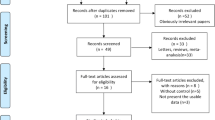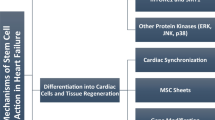Abstract
Stem cell therapy for ischemic heart disease was an emerging concept in the early 2000s. First hopes were largely overshadowed by rather inconsistent results in human trials conducted in the middle of the decade. We aimed at investigating how the field of stem cell research expanded worldwide over the years using scientometric methods. We performed a PubMed inquiry and screened a total of 2609 publications dealing with stem cell therapy for myocardial infarction in the years 2001–2013. Density equalizing maps were used to visualize important centres of stem cell research worldwide. This systematic bibliometric study revealed an increasing research interest in the field of stem cell research in the context of ischemic heart disease over the last decade. Though some of the large human trials failed to show significant effects of stem cell therapy, especially basic science represents an ever growing field that evolved promising new concepts over the last couple of years. The scientific principle of protective paracrine mediators released from transplanted stem cells seems to bear great potential for future cell-free therapeutic use. However, further mechanistic insights are needed before transition from bench to bedside should be attempted, taking the lessons learned from previous studies into account.




Similar content being viewed by others
References
Velagaleti, R. S., Pencina, M. J., Murabito, J. M., Wang, T. J., Parikh, N. I., et al. (2008). Long-term trends in the incidence of heart failure after myocardial infarction. Circulation, 118, 2057–2062.
Penn, M. S., Francis, G. S., Ellis, S. G., Young, J. B., McCarthy, P. M., et al. (2002). Autologous cell transplantation for the treatment of damaged myocardium. Prog Cardiovasc Dis, 45, 21–32.
Orlic, D., Kajstura, J., Chimenti, S., Jakoniuk, I., Anderson, S. M., et al. (2001). Bone marrow cells regenerate infarcted myocardium. Nature, 410, 701–705.
Schachinger, V., Erbs, S., Elsasser, A., Haberbosch, W., Hambrecht, R., et al. (2006). Intracoronary bone marrow-derived progenitor cells in acute myocardial infarction. N Engl J Med, 355, 1210–1221.
Assmus, B., Honold, J., Schachinger, V., Britten, M. B., Fischer-Rasokat, U., et al. (2006). Transcoronary transplantation of progenitor cells after myocardial infarction. N Engl J Med, 355, 1222–1232.
Assmus, B., Schachinger, V., Teupe, C., Britten, M., Lehmann, R., et al. (2002). Transplantation of progenitor cells and regeneration enhancement in acute myocardial infarction (TOPCARE-AMI). Circulation, 106, 3009–3017.
Wollert, K. C., Meyer, G. P., Lotz, J., Ringes-Lichtenberg, S., Lippolt, P., et al. (2004). Intracoronary autologous bone-marrow cell transfer after myocardial infarction: the BOOST randomised controlled clinical trial. Lancet, 364, 141–148.
Lunde, K., Solheim, S., Aakhus, S., Arnesen, H., Abdelnoor, M., et al. (2006). Intracoronary injection of mononuclear bone marrow cells in acute myocardial infarction. N Engl J Med, 355, 1199–1209.
Leri, A., & Anversa, P. (2013). Stem cells: bone-marrow-derived cells and heart failure--the debate goes on. Nat Rev Cardiol, 10, 372–373.
Meyer, G. P., Wollert, K. C., Lotz, J., Pirr, J., Rager, U., et al. (2009). Intracoronary bone marrow cell transfer after myocardial infarction: 5-year follow-up from the randomized-controlled BOOST trial. Eur Heart J, 30, 2978–2984.
Nowbar, A. N., Howard, J. P., Finegold, J. A., Asaria, P., & Francis, D. P. (2014). 2014 global geographic analysis of mortality from ischaemic heart disease by country, age and income: statistics from World Health Organisation and United Nations. Int J Cardiol, 174, 293–298.
Schoffel, N., Vitzhum, K., Mache, S., Scutaru, C., Groneberg, D. A., et al. (2010). Critical analysis of publication procedures and evaluation regarding ankylosing spondylitis by density-equalizing mapping and scientometeric methods. Scand J Rheumatol, 39, 430–432.
Vitzthum, K., Mache, S., Quarcoo, D., Scutaru, C., Groneberg, D. A., et al. (2009). Scoliosis: density-equalizing mapping and scientometric analysis. Scoliosis, 4, 15.
Borger, J. A., Neye, N., Scutaru, C., Kreiter, C., Puk, C., et al. (2008). Models of asthma: density-equalizing mapping and output benchmarking. J Occup Med Toxicol, 3(Suppl 1), S7.
Addicks, J. P., Uibel, S., Jensen, A. M., Bundschuh, M., Klingelhoefer, D., et al. (2014). MRSA: a density-equalizing mapping analysis of the global research architecture. Int J Environ Res Public Health, 11, 10215–10225.
Fricke, R., Uibel, S., Klingelhoefer, D., & Groneberg, D. A. (2013). Influenza: a scientometric and density-equalizing analysis. BMC Infect Dis, 13, 454.
Gastner, M. T., & Newman, M. E. (2004). From the cover: diffusion-based method for producing density-equalizing maps. Proc Natl Acad Sci U S A, 101, 7499–7504.
Lovett, D. A., Poots, A. J., Clements, J. T., Green, S. A., Samarasundera, E., et al. (2014). Using geographical information systems and cartograms as a health service quality improvement tool. Spat Spatiotemporal Epidemiol, 10, 67–74.
Assmus, B., Leistner, D. M., Schachinger, V., Erbs, S., Elsasser, A., et al. (2014). Long-term clinical outcome after intracoronary application of bone marrow-derived mononuclear cells for acute myocardial infarction: migratory capacity of administered cells determines event-free survival. Eur Heart J, 35, 1275–1283.
Gyongyosi, M., Wojakowski, W., Lemarchand, P., Lunde, K., Tendera, M., et al. (2015). Meta-analysis of cell-based CaRdiac stUdiEs (ACCRUE) in patients with acute myocardial infarction based on individual patient data. Circ Res, 116, 1346–1360.
Seeger, F. H., Tonn, T., Krzossok, N., Zeiher, A. M., & Dimmeler, S. (2007). Cell isolation procedures matter: a comparison of different isolation protocols of bone marrow mononuclear cells used for cell therapy in patients with acute myocardial infarction. Eur Heart J, 28, 766–772.
Korf-Klingebiel, M., Kempf, T., Sauer, T., Brinkmann, E., Fischer, P., et al. (2008). Bone marrow cells are a rich source of growth factors and cytokines: implications for cell therapy trials after myocardial infarction. Eur Heart J, 29, 2851–2858.
Jung, C., Fischer, N., Fritzenwanger, M., Thude, H., Ferrari, M., et al. (2009). Endothelial progenitor cells in adolescents: impact of overweight, age, smoking, sport and cytokines in younger age. Clin Res Cardiol, 98, 179–188.
Cohen, K. S., Cheng, S., Larson, M. G., Cupples, L. A., McCabe, E. L., et al. (2013). Circulating CD34(+) progenitor cell frequency is associated with clinical and genetic factors. Blood, 121, e50–56.
du Pre, B. C., Doevendans, P. A., & van Laake, L. W. (2013). Stem cells for cardiac repair: an introduction. J Geriatr Cardiol, 10, 186–197.
Boyle, A. J., Schulman, S. P., Hare, J. M., & Oettgen, P. (2006). Is stem cell therapy ready for patients? Stem Cell Therapy for Cardiac Repair. Ready for the Next Step. Circulation, 114, 339–352.
Kocher, A. A., Schuster, M. D., Szabolcs, M. J., Takuma, S., Burkhoff, D., et al. (2001). Neovascularization of ischemic myocardium by human bone-marrow-derived angioblasts prevents cardiomyocyte apoptosis, reduces remodeling and improves cardiac function. Nat Med, 7, 430–436.
Lichtenauer, M., Mildner, M., Baumgartner, A., Hasun, M., Werba, G., et al. (2011). Intravenous and intramyocardial injection of apoptotic white blood cell suspensions prevents ventricular remodelling by increasing elastin expression in cardiac scar tissue after myocardial infarction. Basic Res Cardiol, 106, 645–655.
Zeng, B., Ren, X., Lin, G., Zhu, C., Chen, H., et al. (2008). Paracrine action of HO-1-modified mesenchymal stem cells mediates cardiac protection and functional improvement. Cell Biol Int, 32, 1256–1264.
Kofidis, T., de Bruin, J. L., Yamane, T., Tanaka, M., Lebl, D. R., et al. (2005). Stimulation of paracrine pathways with growth factors enhances embryonic stem cell engraftment and host-specific differentiation in the heart after ischemic myocardial injury. Circulation, 111, 2486–2493.
Barile, L., Lionetti, V., Cervio, E., Matteucci, M., Gherghiceanu, M., et al. (2014). Extracellular vesicles from human cardiac progenitor cells inhibit cardiomyocyte apoptosis and improve cardiac function after myocardial infarction. Cardiovasc Res, 103, 530–541.
Ibrahim, A. G., Cheng, K., & Marban, E. (2014). Exosomes as critical agents of cardiac regeneration triggered by cell therapy. Stem Cell Reports, 2, 606–619.
Lai, R. C., Arslan, F., Lee, M. M., Sze, N. S., Choo, A., et al. (2010). Exosome secreted by MSC reduces myocardial ischemia/reperfusion injury. Stem Cell Res, 4, 214–222.
Gnecchi, M., He, H., Liang, O. D., Melo, L. G., Morello, F., et al. (2005). Paracrine action accounts for marked protection of ischemic heart by Akt-modified mesenchymal stem cells. Nat Med, 11, 367–368.
Perez-Ilzarbe, M., Agbulut, O., Pelacho, B., Ciorba, C., San Jose-Eneriz, E., et al. (2008). Characterization of the paracrine effects of human skeletal myoblasts transplanted in infarcted myocardium. Eur J Heart Fail, 10, 1065–1072.
Dai, W., Hale, S. L., & Kloner, R. A. (2007). Role of a paracrine action of mesenchymal stem cells in the improvement of left ventricular function after coronary artery occlusion in rats. Regen Med, 2, 63–68.
Niagara, M. I., Haider, H., Jiang, S., & Ashraf, M. (2007). Pharmacologically preconditioned skeletal myoblasts are resistant to oxidative stress and promote angiomyogenesis via release of paracrine factors in the infarcted heart. Circ Res, 100, 545–555.
Tang, Y. L., Zhao, Q., Qin, X., Shen, L., Cheng, L., et al. (2005). Paracrine action enhances the effects of autologous mesenchymal stem cell transplantation on vascular regeneration in rat model of myocardial infarction. Ann Thorac Surg, 80, 229–236. discussion 236–227.
Uemura, R., Xu, M., Ahmad, N., & Ashraf, M. (2006). Bone marrow stem cells prevent left ventricular remodeling of ischemic heart through paracrine signaling. Circ Res, 98, 1414–1421.
Lichtenauer, M., Mildner, M., Hoetzenecker, K., Zimmermann, M., Podesser, B. K., et al. (2011). Secretome of apoptotic peripheral blood cells (APOSEC) confers cytoprotection to cardiomyocytes and inhibits tissue remodelling after acute myocardial infarction: a preclinical study. Basic Res Cardiol, 106, 1283–1297.
Vicencio, J. M., Yellon, D. M., Sivaraman, V., Das, D., Boi-Doku, C., et al. (2015). Plasma exosomes protect the myocardium from ischemia-reperfusion injury. J Am Coll Cardiol, 65, 1525–1536.
Maltais, S., Tremblay, J. P., Perrault, L. P., & Ly, H. Q. (2010). The paracrine effect: pivotal mechanism in cell-based cardiac repair. J Cardiovasc Transl Res, 3, 652–662.
Pavo, N., Charwat, S., Nyolczas, N., Jakab, A., Murlasits, Z., et al. (2014). Cell therapy for human ischemic heart diseases: Critical review and summary of the clinical experiences. J Mol Cell Cardiol, 75C, 12–24.
Acknowledgments
We want to thank Kristen Kopp for her great support editing the manuscript.
Conflict of Interest
The authors declare that there is no conflict of interests regarding the publication of this paper.
Funding
The authors received no specific funding for this work. The authors declare that there is no conflict of interests regarding the publication of this paper.
Author information
Authors and Affiliations
Corresponding author
Rights and permissions
About this article
Cite this article
Edlinger, C., Schreiber, C., Wernly, B. et al. Stem Cell Therapy for Myocardial Infarction 2001–2013 Revisited. Stem Cell Rev and Rep 11, 743–751 (2015). https://doi.org/10.1007/s12015-015-9602-z
Published:
Issue Date:
DOI: https://doi.org/10.1007/s12015-015-9602-z




